Occupation Actor Role Actor | Name Sessue Hayakawa Years active 1914–1966 | |
 | ||
Full Name Kintaro Hayakawa早川金太郎 Died November 23, 1973, Tokyo, Japan Children Yoshiko Hayakawa, Fujiko Hayakawa, Yukio Hayakawa Movies The Bridge on the River Kwai, The Cheat, The Dragon Painter, Swiss Family Robinson, The Geisha Boy Similar People Tsuru Aoki, David Lean, Carl Foreman, Michael Wilson, Cecil B DeMille | ||
Sessue hayakawa documentary proposal
Sessue Hayakawa (早川 雪洲, Hayakawa Sesshū, June 10, 1889 – November 23, 1973) was a Japanese actor who starred in Japanese, American, French, German, and British films. Hayakawa was one of the biggest stars in Hollywood during the silent era of the 1910s and 1920s. He was the first actor of Asian descent to find stardom as a leading man in the United States and Europe. His "broodingly handsome" good looks and typecasting as a sexually dominant villain made him a heartthrob among American women during a time of racial discrimination, and he became one of the first male sex symbols of Hollywood.
Contents
- Sessue hayakawa documentary proposal
- Who is Sessue Hayakawa
- Early life and career
- Stardom
- Later career
- Racial barriers
- Personal life
- Death and legacy
- Documentary films
- Filmography
- References
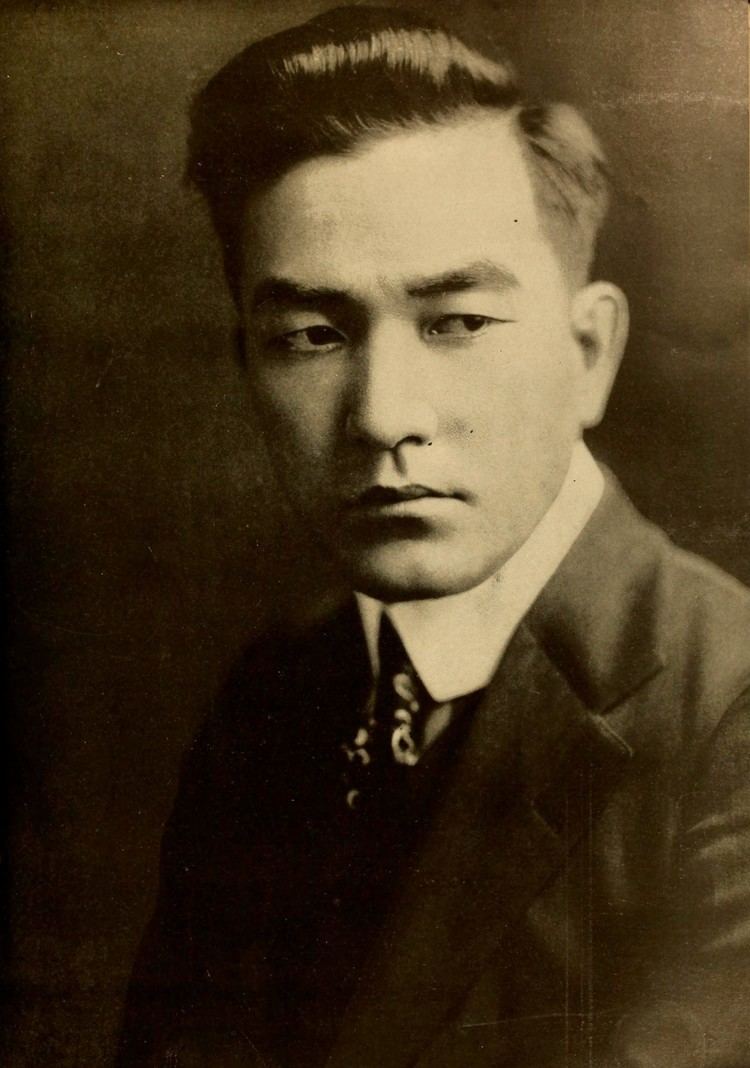
During those years, Hayakawa was as well-known and popular as Charlie Chaplin and Douglas Fairbanks, although today his name is largely unknown to the public.
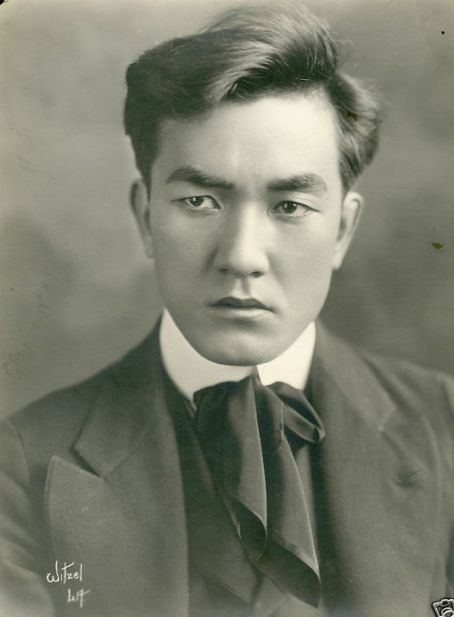
His popularity, sex appeal, and extravagant lifestyle (e.g., his wild parties and his gold-plated Pierce-Arrow) unsettled many segments of American society which were already filled with feelings of the "yellow peril". With the rising tensions between Japan and the United States, Japanese actors were no longer welcome in Hollywood. Following the end of the war, Asian characters were depicted in a desexualized fashion in modern Hollywood and in the wider society, as exemplified by the controversial character of I. Y. Yunioshi in Breakfast At Tiffany's. Hayakawa refused to adopt the negative stereotypes. He abandoned Hollywood for European cinema and there he was treated equally. Hayakawa's friendships with American actors led him to return to Hollywood. He was one of the highest paid stars of his time, earning $5,000 per week in 1915, and $2 million per year through his own production company during the 1920s. He starred in over eighty movies, and two of his films stand in the United States National Film Registry. Of his English-language films, Hayakawa is probably best known for his role as Colonel Saito in the film The Bridge on the River Kwai, for which he received a nomination for Academy Award for Best Supporting Actor in 1957. He played a similar role as General Matsui in Hell to Eternity, opposite Jeffrey Hunter as USMC hero Guy Gabaldon. He also appeared in the 1950 film Three Came Home and as the pirate leader in Disney's Swiss Family Robinson in 1960.
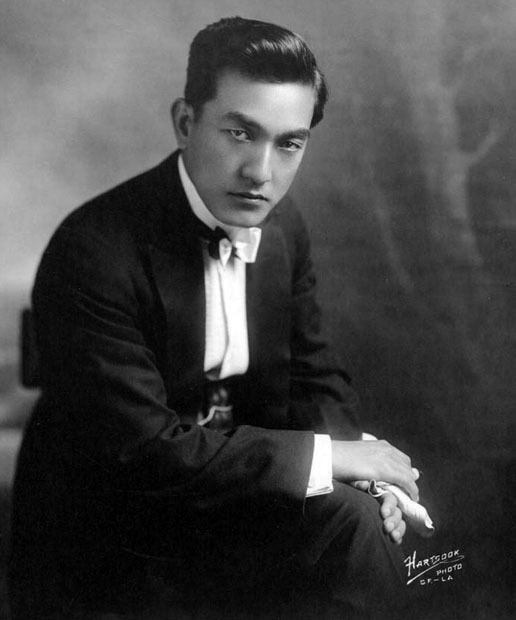
In addition to his film acting career, Hayakawa was a theatre actor, film and theatre producer, film director, screenwriter, novelist, martial artist, member of the French Resistance, and a Zen master.
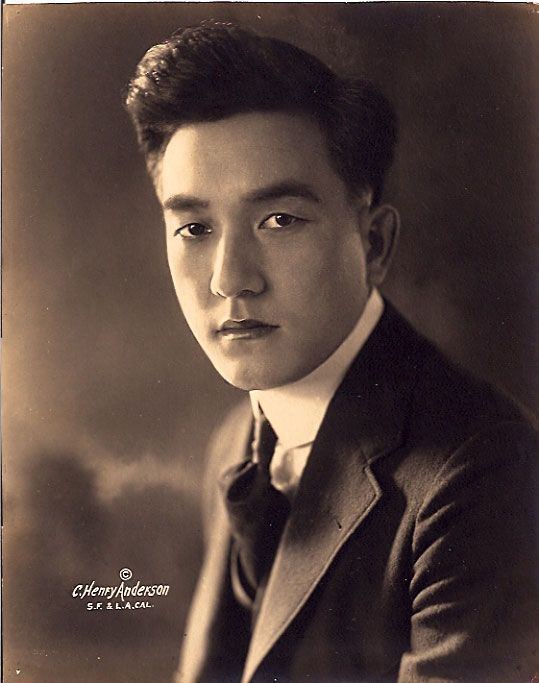
Who is Sessue Hayakawa?
Early life and career
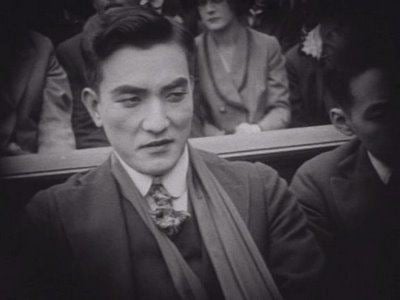
Hayakawa was born Kintarō Hayakawa (早川 金太郎, Hayakawa Kintarō) in the village of Nanaura, now part of Chikura Town in the city of Minamibosō in Chiba Prefecture, Japan on June 10, 1889, the second eldest son of the provincial governor. From an early age, Hayakawa's family intended him to become an officer in the Imperial Japanese Navy. However, while a student at the Naval Academy in Etajima, he swam to the bottom of a lagoon (he grew up in a shellfish diving community) on a dare and ruptured his eardrum. The injury caused him to fail the Navy physical. His father felt shame and embarrassment by his son's failure and this drove a wedge between them. The strained relationship drove the young Hayakawa to attempt seppuku (ritual suicide). One evening, Hayakawa entered a shed on his parents' property and prepared the venue. He put his dog outside and attempted to uphold his family's samurai tradition by stabbing himself more than 30 times in the abdomen. The barking dog brought Hayakawa's parents to the scene and his father used an axe to break down the door, saving his life. After he recovered from the suicide attempt, Hayakawa began to study political economics at the University of Chicago to fulfill his family's new wish that he become a banker. He lived in the United States from 1911 until 1923, returned to Japan to attend his father's funeral, and came back in 1925.

After his second year of studies at the University of Chicago, Hayakawa decided to quit school and return to Japan. He traveled to Los Angeles and awaited a transpacific steamship. During his stay, he discovered the Japanese Theatre in Little Tokyo and became fascinated with acting and performing plays. It was around this time he first assumed the name Sessue Hayakawa. One of the productions in which Hayakawa performed was called The Typhoon. Film producer Thomas Ince saw the production and offered to turn it into a silent movie with the original cast. Anxious to return to his studies at the University of Chicago, Hayakawa decided to try to dissuade Ince by requesting the astronomic fee of $500 a week, but Ince agreed to his request.
The Typhoon, filmed in 1914, became an instant hit and was followed by two additional pictures produced by Ince, The Wrath of the Gods co-starring Hayakawa's new wife, fellow Issei and actress Tsuru Aoki, and The Sacrifice. With Hayakawa's rising stardom, Jesse L. Lasky soon offered Hayakawa a contract, which he accepted, making him part of Famous Players-Lasky (now Paramount Pictures).
Stardom
Hayakawa's second film for Famous Players-Lasky was The Cheat, directed by Cecil B. DeMille. The Cheat co-starring Fannie Ward, was a huge success, making Hayakawa a romantic idol to the female movie-going public. With his popularity, Hayakawa's salary reached to over $5,000 a week in 1915. In 1917, he built his residence, a castle-styled mansion, at the corner of Franklin Avenue and Argyle Street in Hollywood, which was a local landmark until it was demolished in 1956. Following The Cheat, Hayakawa became a top leading man for romantic dramas in the 1910s and early 1920s and then, switched to Westerns and Action films. After years of extensive typecasting at Famous Players, Hayakawa decided to form his own production company. He borrowed $1 million from William Joseph Connery, a former classmate at the University of Chicago, son of James Patrick Connery, who in turn was a former business partner of Will H. Hays of the Teapot Dome Scandal, and formed Haworth Pictures Corporation in 1918. Over the next three years, he produced 23 films and netted $2 million a year. Hayakawa controlled content, produced, starred in, directed, and contributed to the design, writing, and editing of the films which were highly influential in the American public's perception of Asians. During the height of his popularity, critics hailed Hayakawa's Zen-influenced acting style. Hayakawa sought to bring muga, or the "absence of doing," to his performances, in direct contrast to the then-popular studied poses and broad gestures. He was one of the first stars to do so, Mary Pickford being another.
In 1918, Hayakawa personally chose the American serial actress Marin Sais to appear opposite him in a series of films, the first being the 1918 racial drama The City of Dim Faces followed by His Birthright, which also starred his wife. Hayakawa's collaboration with Sais ended with the 1919 film Bonds of Honor. He also appeared opposite Jane Novak in The Temple of Dusk, a Mutual Film Corporation production. In 1919, Hayakawa made The Dragon Painter, appearing opposite his wife, and became one of the highest paid stars of the era, earning $2 million per year through his production company throughout the 1920s. His fame rivaled that of Douglas Fairbanks, Charlie Chaplin, and William S. Hart, and in many ways, he was a precursor to Rudolph Valentino. Hayakawa drove a gold plated Pierce-Arrow and entertained lavishly in his "Castle" which was known as the scene of some of Hollywood's wildest parties. Shortly before Prohibition took effect in 1920, he bought a large supply of liquor leading him to claim that he owed his social success to his liquor supply. During this period, he lost $1 million during a single evening gambling in Monte Carlo. He shrugged off the loss while another Japanese gambler who lost a similar sum of money took his own life. A bad business deal forced Hayakawa to leave Hollywood in 1921. The next 15 years saw him perform in New York, France, England and Japan. In 1924, he made The Great Prince Shan and The Story of Su in London. In 1925, he wrote a novel, The Bandit Prince, and adapted it into a short play. In 1930, he performed in Samurai, a one-act play written especially for him, for Great Britain's King George V and Queen Mary, and also became widely known in France. Later that year, Hayakawa returned to Japan and produced a Japanese-language stage version of The Three Musketeers.
Later career
During the 1930s, his career began to suffer from the rise of talkies, as well as a growing anti-Japanese sentiment. Hayakawa's sound film debut came in 1931 in Daughter of the Dragon, starring opposite fellow Asian performer Anna May Wong. Sessue Hayakawa played a Samurai in the German-Japanese co-production The Daughter of the Samurai in 1937, which was directed by Arnold Fanck. In 1937, Hayakawa went to France to perform in Yoshiwara and later found himself trapped and separated from his family, when the German occupation of France began in 1940. Hayakawa made few movies during these years, but supported himself by selling watercolors. He joined the French Resistance and helped Allied flyers during the war. In 1949, Humphrey Bogart's production company located Hayakawa and offered him a role in Tokyo Joe. Before issuing a work permit, the American Consulate investigated Hayakawa's activities during the war and found that he had in no way contributed to the German war effort. Hayakawa followed Tokyo Joe with Three Came Home, in which he played real-life POW camp commander Lieutenant-Colonel Suga, before returning to France.
After World War II, his on-screen roles can best be described as the honorable villain, a figure exemplified by his portrayal of Colonel Saito in The Bridge on the River Kwai. The film won the 1957 Academy Award for Best Picture and Hayakawa received a nomination for Best Supporting Actor, losing to Red Buttons. He was also nominated for a Golden Globe for the role that he called the highlight of his career. After that film, Hayakawa largely retired from acting. Throughout the rest of his life he performed on a handful of television shows and a few movies with his final film appearance in The Daydreamer in 1966. Hayakawa established his own production company in 1918 and operated it until 1921. During this period, he produced, directed, contributed to the design, writing, of editing his films and also wrote several plays, painted watercolors, performed martial arts, and managed his investments. In 1961, he became a Zen master, a private acting coach, authored his autobiography, Zen Showed Me the Way, and appeared on the NBC interview program Here's Hollywood.
Racial barriers
Hayakawa was in a unique position due to his ethnicity and fame in the English-speaking world. Due to anti-miscegenation laws that existed at the time, Hayakawa would be unable to become a U.S. citizen or marry someone of another race. In 1930, the Production Code came into effect which forbade portrayals of miscegenation in film. This meant that unless Hayakawa's co-star was an Asian actress, he would not be able to portray a romance with her. Throughout his career, the United States dealt with yellow peril which affected Americans' perceptions of Asians. This left Hayakawa constantly typecast as a villain or forbidden lover and unable to play parts that would be given to white actors such as Douglas Fairbanks. Hayakawa can be seen as a precursor to Rudolph Valentino. Both were foreign born, typecast as exotic or forbidden lovers, wildly popular during their time and Hayakawa even helped Rudolph Valentino's rise to stardom inadvertently. His contract with Famous Players expired in May 1918, but the studio still asked him to star in The Sheik. Hayakawa refused the picture in favor of starting his own company, most likely not happy with another "forbidden villain lover" role. With influence from June Mathis, the role went to the barely known Valentino and turned him into a screen icon overnight.
In more than 20 films for Famous Players, Hayakawa was typecast as either the villain or the exotic lover who in the end would turn his lover over to the proper man of her race. This typecasting was the reason Hayakawa established his own production company in 1918, near the height of his US fame. At the time, he stated he wanted to be shown "as he really is and not as fiction paints him." As for his prior roles, he said, "They are false and give people a wrong idea of us [Asians]." Hayakawa desperately sought to show a more balanced and fair portrait of Asians. In 1949, he lamented, "My one ambition is to play a hero." In his autobiography he observed, "All my life has been a journey. But my journey differs from the journeys of most men."
Hayakawa's early films were not popular in Japan most likely due to the fact that Hollywood played up his "Japaneseness," by which is meant his roles contributed to the image of the sadistic and cruel Japanese man. Many Japanese viewers found this portrayal — which made him popular in the U.S. — insulting. Nationalistic groups in particular were censorious. Some Japanese felt his American success represented turning his back on his nation because of the unflattering images his roles presented. His later films were also not popular, because he was seen as "too Americanized" during a time of "Nationalism". As Japan's extension of Imperial rule over China increased in the 1930s, however, many Chinese nationalist groups hailed the portrayals as true-to-life.
Personal life
On May 1, 1914, Hayakawa married fellow Japanese actress Tsuru Aoki, who co-starred in several of his movies. Hayakawa's first child, a son, was born in New York in 1929, to a white actress named Ruth Noble. The boy was known as Alexander Hayes, but the name was changed to Yukio after Sessue and his wife Tsuru adopted the child and took him to be raised and educated in Japan. Later, Hayakawa had two daughters: Yoshiko, an actress, and Fujiko, a dancer. Aoki died in 1961, after which Hayakawa moved back to Japan and became a Zen master. Hayakawa was known for his discipline and martial arts skills. While a student at the University of Chicago, he played quarterback for the football team and was once penalized for using jujitsu to bring down an opponent.
While filming The Jaguar's Claws, in the Mojave Desert, Hayakawa played a Mexican bandit, with 500 cowboys as extras. On the first night of filming, the extras drank all night and well into the next day. No work was being done, so Hayakawa challenged the group to a fight. Two men stepped forward. Hayakawa said of the incident, "The first one struck out at me. I seized his arm and sent him flying on his face along the rough ground. The second attempted to grapple and I was forced to flip him over my head and let him fall on his neck. The fall knocked him unconscious." Hayakawa then disarmed yet another cowboy. The extras returned to work, amused by the way the small man manhandled the big bruising cowboys.
Death and legacy
Sessue Hayakawa retired from film in 1966. He died in Tokyo on November 23, 1973, from a cerebral thrombosis, complicated by pneumonia. He was buried in the Chokeiji Temple Cemetery in Toyama, Japan.
Many of his films are lost. However, most of his later works, including The Bridge on the River Kwai, the Jerry Lewis comedy The Geisha Boy (in which he lampoons his role in The Bridge on the River Kwai), The Swiss Family Robinson (in which he plays the pirate chief Kuala), Tokyo Joe and Three Came Home, are available on DVD. For his contribution to the motion picture industry, Sessue Hayakawa was awarded a star on the Hollywood Walk of Fame at 1645 Vine Street, in Hollywood, California. A musical based on his life, Sessue, played in Tokyo in 1989. In September 2007, the Museum of Modern Art held a retrospective on Hayakawa's work entitled: Sessue Hayakawa: East and West, When the Twain Met. Japanese film director Nagisa Oshima had planned to create a biopic entitled Hollywood Zen based on Hayakawa's life. The script had been allegedly completed and set to film in Los Angeles, but due to constant delays and the eventual death of Oshima himself in 2013, the project went unrealized.
The novelist Nicholas Monsarrat, author of The Cruel Sea, records in his autobiography Life is a Four-letter Word (Volume One, Breaking In, Pan Books 1969, page 59) that in the early 1920s the British comic paper Film Fun ran "a wonderful serial called 'The League of the Yellow Hand', by 'the famous Japanese film star', Sessue Hayakawa".
